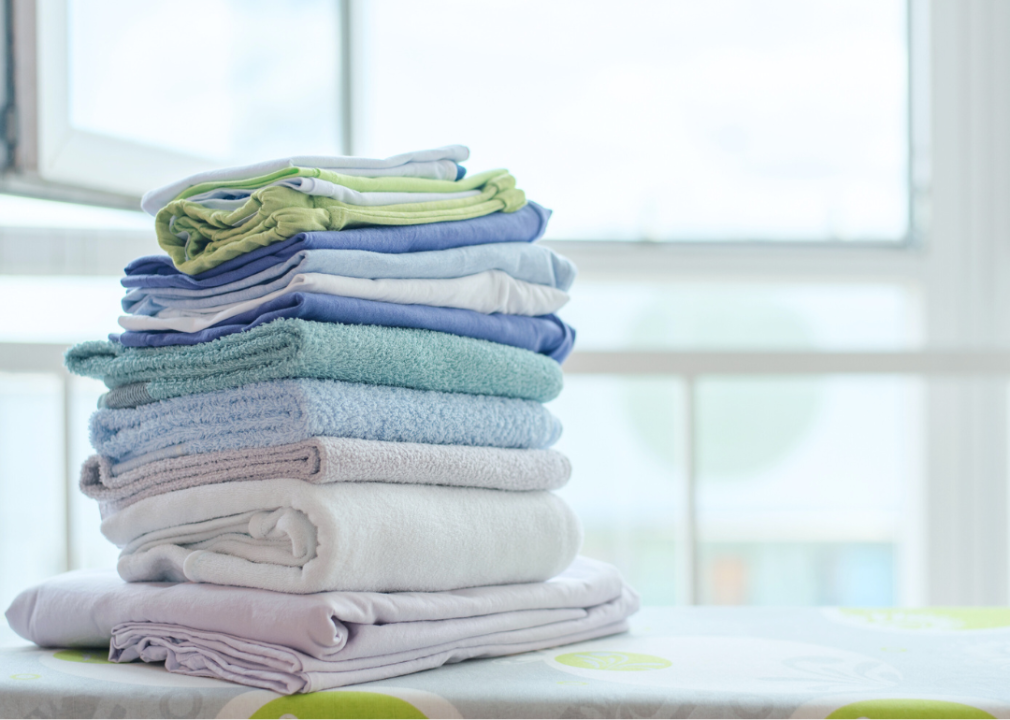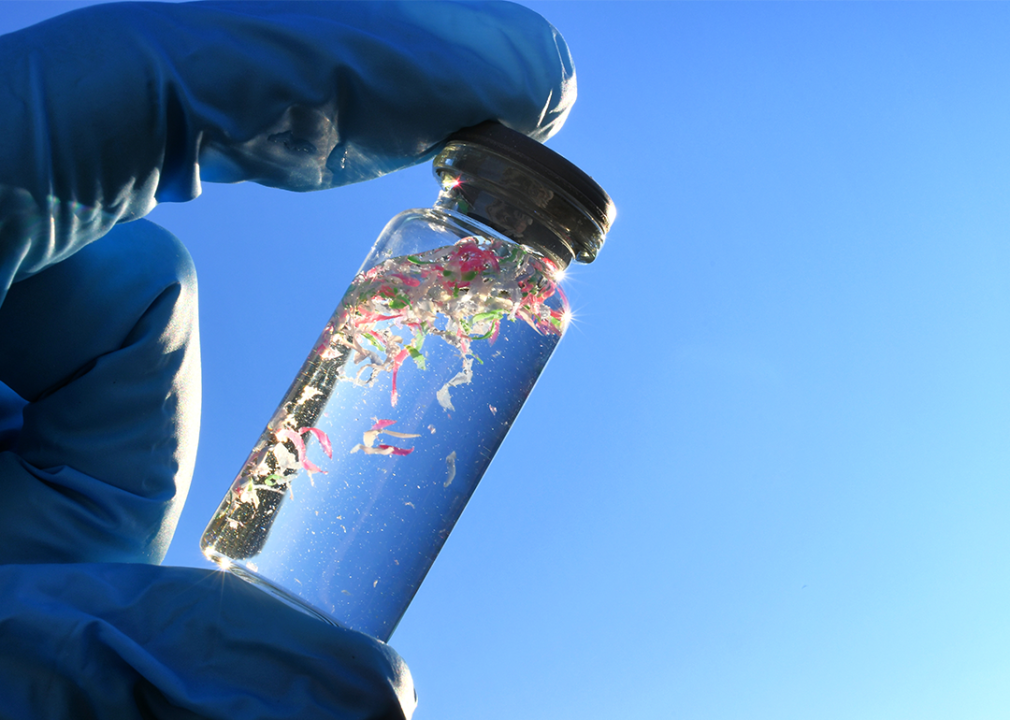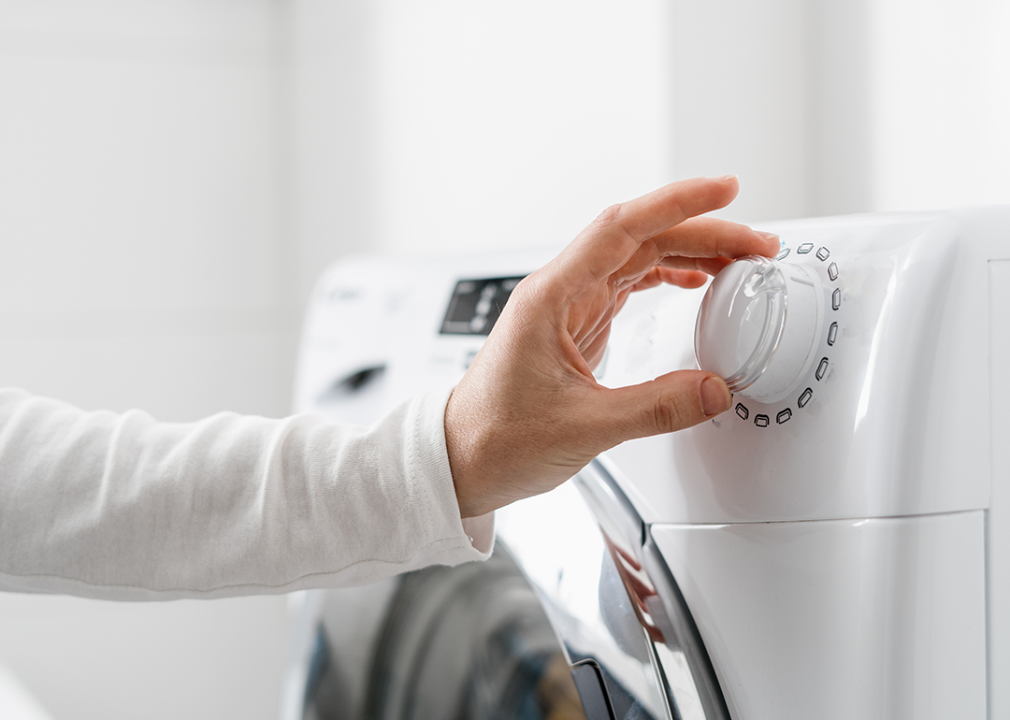
Laundry might seem like one of the most run-of-the-mill chores, but its environmental impact can be dramatic. HeySunday consulted scientific studies and reports from environmental agencies to determine the impacts of laundry on the environment and how we can help.
While pedestrian, many of our most routine tasks can have enormous implications on our ecological footprint as a society if we aren't mindful. For instance, many people leave the sink on while brushing their teeth. It may seem quick and harmless, but it can account for four gallons of wasted water per session, according to Money. Similarly, many households might unwittingly use laundry detergents that can pollute nearby water sources and be toxic to aquatic life, including phosphates and surfactants.
At last count, there were around 840 million washing machines in use across the globe. Even skipping 1 out of 6 loads could reduce 186 million tons of emissions, according to McKinsey's Fashion on Climate report in partnership with Global Fashion Agenda.
That said, not all spin cycles are equal. Individuals and personal households only account for a proportion of laundry. The average residential washing machine uses about 40 gallons of water per load for older washing machines, according to the Environmental Protection Agency. In contrast, newer models use 31 gallons per load.
The good news? All it takes is some tweaking of our daily habits and cleaning schedules to have equally as dramatic a positive impact. By examining the common household staples—from our choice of detergent to whether our machines are front-loading—every person can reconsider if their laundry habits are eco-friendly and play a role in keeping the environment just as clean as their whites.

In 2022, global fiber production increased from 112 million tonnes the year before to 116 million tonnes, according to the Materials Market Report, close to 60% of which were synthetic fibers (e.g., polyester or nylon). Most synthetic fibers that turn into microplastics don't do so during their manufacturing process but when worn and washed, especially the first few times we wash them. Of the 14 million tonnes of microplastics on the ocean floor, an estimated 16% to 35% are from synthetic fabrics, tallying in at a whopping 200,000 tonnes to 500,000 tonnes entering the oceans annually, according to the European Environment Agency.
Thankfully, there are some easy choices consumers can make to minimize their microplastic contributions. For one, try to avoid fast fashion, as the clothing made by these companies tends to wear out and dissolve into microplastics quickly. When possible, try to buy used clothes, as recycled fibers are less likely to shred even during washing, according to the International Union for Conservation of Nature.

The average residential washing machine uses 31 gallons of water per load, and that's only if you have a newer one; older models (before 2003) tend to use closer to 40 gallons per load. That's around a full bathtub of water for just one load alone.
However, many front-loading machines can use just 13 gallons of water per load. Many front-load machines can wash over 20 pounds of laundry at a time (compared to 10 or 15 for a top-loader), amounting to about 45% less water usage for the same amount of clothing cleaned in a personal, top-loading machine, according to the EPA.
Many states and cities have incentivized using water-efficient washing machines and communal laundry spaces, including rebates for households that buy an efficient personal machine and owners of multiresidence housing units leasing multiple washing machines.

The amount of greenhouse gasses emitted during washing in the U.S. annually is 26 metric tons—the equivalent of driving 66,497 miles in a gas-powered vehicle.
Thankfully, a very simple solution can help U.S. households cut way down on their emissions: dialing the temperature down a bit. Washing with cold water can save as much as 80% on energy usage. Reducing the water temperature when washing our clothes by even a few degrees can noticeably reduce emissions.
A few months ago, the Department of Energy announced it had finalized efficiency standards for residential washing machines, with compliance mandated in U.S. households starting in March 2028. These regulations are estimated to cut almost 14 million metric tons of carbon dioxide emissions that would otherwise be released into the atmosphere over the next three decades.

Despite being utilized far less frequently, clothes dryers suck up more than twice as much electricity annually as cooking or ceiling fans do within a household and over three times as much as microwaves or dishwashers.
That's because most dryers work in energy-inefficient ways by heating in air, heating the clothes, and then externally venting it. However, this doesn't necessarily have to be the standard: In Europe, for example, many dryers work by recycling hot air rather than venting and reheating it. An even easier option is to do away with your clothes dryer altogether and revert to the simple method of using a clothesline or drying rack.
The DOE's new efficiency standards apply to clothes dryers and washers and will also become mandatory in March 2028. Using energy-efficient dryers across U.S. homes is estimated to curb 57 million metric tons of carbon dioxide emissions over the coming 30 years.

We all love that fresh—or flowery, or fruity—scent we familiarize with clean laundry, but it often comes at a high cost. Scented laundry detergents are linked to seven types of hazardous air pollutants and two types of carcinogenic HAPs, often vented directly into the outdoors. According to the National Institute for Occupational Safety and Health, carcinogens have no level of exposure at all that is safe for humans.
Story editing by Carren Jao. Copy editing by Paris Close.
This story originally appeared on HeySunday and was produced and distributed in partnership with Stacker Studio.